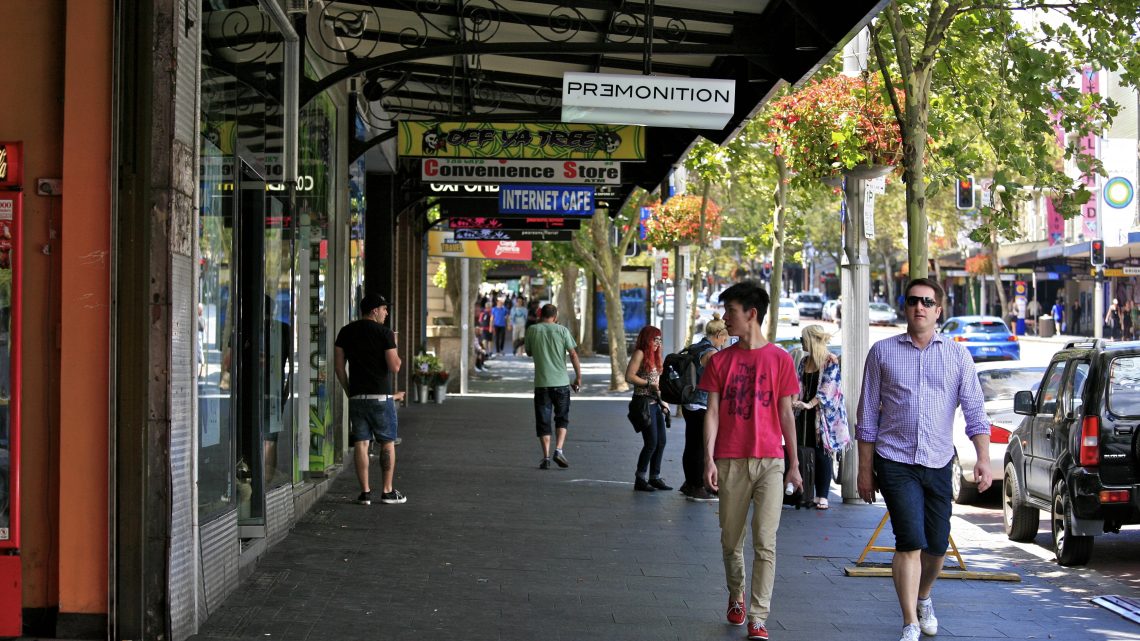By DANIEL LO SURDO
The National Trust of Australia has flagged concerns about the City of Sydney’s proposed Oxford Street development, with the peak body for community-based heritage conservation warning that potential changes would “drastically alter the distinctive character of Oxford Street and irreversibly damage the heritage” of the precinct.
This comes as Toga and Ashe Morgan lodged a $7.5 million development application earlier this month with the City of Sydney, covering three blocks of Oxford Street. The application included “preparatory early demolition works to heritage buildings … removal of shopfronts and windows and erection of scaffolding around each building to allow cataloguing of all windows and inspections of existing bricks and sandstone”.
This stage of development will be on public exhibition until February 8, when it will be presented to the City’s Local Planning Panel for determination. The application’s heritage impact statement concluded that “the proposed works are in keeping with the relevant objectives, provisions, and policies related to the heritage management of the site”.
The development application says that the works proposed include the removal of non-original and non-significant ceiling, wall and floor linings, as well as existing, non-significant shopfronts and windows. The National Trust believes that potential changes to Oxford Street would cause a “major heritage impact” that would not address the economic downturn that the precinct has experienced in recent years.
According to the City of Sydney’s proposed Oxford Street Cultural and Creative Precinct plan, the City will allow property developers, such as Toga and Ashe Morgan, to increase floor space and building height along Oxford Street if they dedicate at least 10 per cent to cultural and creative purposes. These planning controls are still under review and have not yet been approved.
The National Trust has suggested alternate methods to attract patronage back to Oxford Street. It recommended the installation of outdoor dining, public lights and artworks to help reinvigorate the area.
The establishment of outdoor dining and amenities would be consistent with measures taken by Lord Mayor Clover Moore and the City during the COVID-19 pandemic. The city commissioned pop-up cycleways in the inner-city, a wider pedestrian zone on George Street, and a new $4 million grant for its creative and cultural precinct following the success of a six-week laneway festival in the precinct between Wynyard and Town Hall. These offered ventilated, socially distanced outcomes to encourage people to be confident about returning to the city and have all been largely successful.
Mardi Gras
Proposed works to Oxford Street have also clouded the future of the Sydney Mardi Gras Parade.
When asked specifically how these works would impact the future of Mardi Gras on Oxford Street, a City of Sydney spokesperson said that “activity will be limited to works to the existing heritage buildings’ hazardous material removal, demolition, structural reinforcing, the removal of redundant services and the cataloguing of heritage items through the buildings”. The spokesperson added that “pedestrian access will be maintained around these buildings, with construction zones largely off Oxford Street”.
The community has echoed the National Trust’s concerns for the site, with increased building heights, additional storeys on existing heritage buildings and changes to planning controls being the principal concerns for the future of Oxford Street.
In 1978 in Darlinghurst, a small group of protesters formed to contribute to the international Gay celebrations, which began a spate of police violence and arrests made in the coming months. The following year, the NSW parliament repealed the Summary Offences Act Legislation that allowed the arrests to be made, which helped set the stage for an incident-free Mardi Gras parade to occur in 1979.
The post-parade party was introduced in 1980, with the Mardi Gras event gradually picking up greater media coverage and interest, with over 500,000 attending in 1993.
This year, the Mardi Gras party will not go ahead due to the restrictions on singing and dancing and density limits in venues throughout NSW, with organisers saying that “the health and safety of our community will always remain our priority”.
The party was due to be held at the Hordern Pavilion following the parade at the nearby Sydney Cricket Ground, with more than 10,000 people set to attend the March 5 event.
April 25, 2024 |
Staff Writer
April 23, 2024 |
Staff Writer
April 19, 2024 |
Staff Writer
April 18, 2024 |
Staff Writer
April 12, 2024 |
Staff Writer
April 11, 2024 |
Staff Writer


